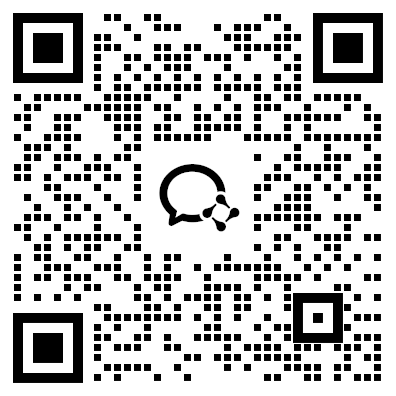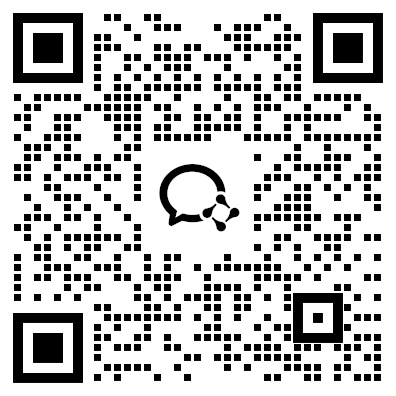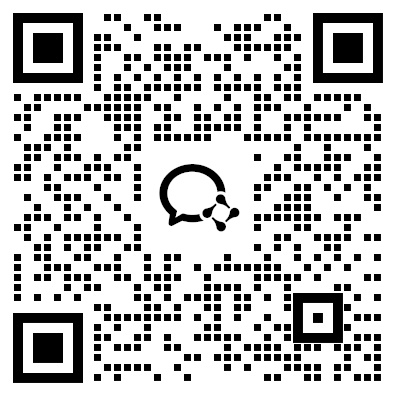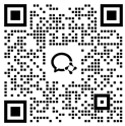选课中心NEW
7099人选课
SAT【0】元讲座
免费学
托福【0】元讲座
免费学
SAT模考网站HOT
39209人预约
托福备考练习HOT
39209人预约
SAT辅导课程NEW
免费报名
AP辅导课程NEW
立即报名
中学生托福课程NEW
立即报名
大学生托福课程NEW
立即报名
【定制】1v1
私人订制
【资料】考前冲刺
精

扫码添加助教
免费领取
备考资料大礼包

扫码关注公众号
为了帮助大家高效备考SAT,新东方在线SAT频道为大家带来SAT阅读练习资料A Chemist,希望对大家SAT备考有所帮助。更多精彩尽请关注新东方在线SAT频道!
A Chemist Comes Very Close to a Midas Touch
In a lab in Princeton University’s ultra-sleek chemistry building, researchers toil in a modern-day hunt for an elusive power: alchemy.
Throughout the centuries, alchemists tried in vain to transform common metals like iron and lead into precious ones like gold or platinum. Today,Paul Chirik, a professor of chemistry at Princeton, has managed a new twist on the timeworn pursuit.
Dr. Chirik, 39, has learned how to make iron function like platinum, in chemical reactions that are crucial to manufacturing scores of basic materials. While he can’t, sadly, transmute a lump of iron ore into a pile of valuable jewelry, his version of alchemy is far more practical, and the implications are wide-ranging.
The process could herald a new era of flexible manufacturing technologies, while enabling companies to steer clear of scarce elements as prices rise or obtaining them becomes environmentally or geopolitically risky.
“No chemist would think lithium was in short supply,” Dr. Chirik said, “but what happens if you put a lithium battery in every car? This is why chemistry needs to be ahead of the curve. We need to have adaptable solutions.”
Despite the cost and relative scarcity of precious metals — iridium, platinum, rhodium — we rely on them to manufacture products from denim to beer, pharmaceuticals to fuel cells. The elements are used as catalysts, substances that kick off or enable chemical reactions.
Dr. Chirik’s work involves dissolved catalysts, which are mixed into the end product. The molecules of the catalyst dissipate during the reaction. For instance, a solution containing platinum is used to make silicone emulsifiers, compounds that in turn feed products like makeup, cookware and glue. Tiny amounts of the expensive metal are scattered in all these things; your jeans, for instance, contain unrecoverable particles of platinum.
“We’re not about to run out of platinum,” said Matthew Hartings, a chemist at American University in Washington, “but this process spends that platinum in a nonsustainable way.”
Dr. Chirik’s chemistry essentially wraps an iron molecule in another, organic molecule called a ligand. The ligand alters the number of electrons available to form bonds. It also serves as a scaffold, giving the molecule shape. “Geometry is really important in chemistry,” Dr. Hartings said. Dr. Chirik’s “ligands help the iron to be in the right geometry to help these reactions along.”
In addition to iron, Dr. Chirik’s lab also works with cobalt, which sits beside iron on the periodic table. Using cobalt, Dr. Chirik said, the scientists have generated “a whole new reaction that no one has ever seen before.” It produces new types of plastics using very inexpensive starting materials.
But the price of cobalt has shot up since the lab first began its research, thanks to the element’s use in the flat batteries that power gadgets like iPads and iPhones.
“The iPad has completely changed the price of cobalt,” Dr. Chirik said, “so something that once was garbage is now valuable.”
While the rising cost may undermine the economic incentive to use Dr. Chirik’s cobalt-fueled materials, it seems to perfectly underscore his basic point about the need for flexibility.
“There’s a broad appeal and logic to focusing on more abundant elements in designing catalysts,” said Roderick Eggert, a professor of economics and business at the Colorado School of Mines.
A vast majority of the chemicals we manufacture and then use to make other products require catalysts. And a lot of catalysts use so-called noble metals like platinum, palladium and rhodium, which are expensive. A pound of platinum costs about $22,000. A pound of iron, meanwhile, costs about 50 cents.
As an undergraduate chemistry major, Dr. Chirik worked on reactions that used iridium as a catalyst. A pound of iridium costs about $16,000. Dr. Chirik’s boss kept the iridium-based compound locked in a desk drawer.
“You had to walk from his office to the lab holding it with two hands, and not talk to anyone,” Dr. Chirik recalled. The experience left him with the seed of an idea, he said. “Why can’t we do this with something cheaper?”
On a spring afternoon at the Princeton lab, a graduate student toiled away at a glovebox, a vacuum chamber that prevents the iron from rusting. Rust is a potential downside of using iron in manufacturing, and controlling it could prove challenging and expensive. “We’re not talking about making a dish of spaghetti at home,” Dr. Chirik said, referring to the volume of chemicals involved when doing reactions on an industrial scale. It remains to be seen, he said, whether concerns about the use of an “air sensitive” substance outweigh concerns about the costs and environmental impact of precious metals.
以上就是关于“SAT阅读练习资料A Chemist”的内容,更多精彩内容,请关注SAT频道!
SAT水平能力测试【0元免费测试】

 资料下载
资料下载
【SAT】SAT官方指南题目合集10套
发布时间:2024-04-15添加新东方在线美本助教号
回复【美本资料】获取
SAT阅读+文法+数学专项题型练习册
发布时间:2024-05-31添加新东方在线美本助教号
回复【美本资料】获取
机考SAT-可汗练习题
发布时间:2024-02-29添加新东方在线美本助教号
回复【美本资料】获取
机考SAT-CB官方样题
发布时间:2024-02-29添加新东方在线美本助教号
回复【美本资料】获取
《学科留学百问 (AP-IB-A Level)》
发布时间:2023-02-22添加新东方在线美本助教号
回复【美本资料】获取
2024中国学生留学备考白皮书
发布时间:2023-02-22添加新东方在线美本助教号
回复【美本资料】获取
2023北美考试一本通高中篇
发布时间:2023-02-22添加新东方在线美本助教号
回复【美本资料】获取
新东方SAT阅读讲义
发布时间:2023-02-06添加新东方在线美本助教号
回复【美本资料】获取
2023北美考试一本通高中篇
发布时间:2024-02-29关注美本留学家长帮微信订阅号
回复【美本资料】获取
2024中国学生留学备考白皮书
发布时间:2019-12-19添加新东方在线美本助教号
回复【美本】获取
《学科留学百问 (AP-IB-A Level)》
发布时间:2019-12-19添加新东方在线美本助教号
回复【美本资料】获取
机考SAT-CB官方样题
发布时间:2019-12-19添加新东方在线美本助教号
回复【美本资料】获取
机考SAT-可汗练习题
发布时间:2019-12-19添加新东方在线美本助教号
回复【美本资料】获取
SAT阅读+文法+数学专项题型练习册
发布时间:2019-11-28添加新东方在线美本助教号
回复【美本资料】获取

添加美本助教
即可获取美本资料大礼包

 推荐阅读
推荐阅读
在2024年的QS学科排名中,英国大学再次展现了他们在教育领域的卓越表现。这次排名中,英国大学在16个学科领域取得了世界第一的成绩,为其在全球教育界树立了新的标杆。
来源 : 网络整理 2024-04-23 11:16:49 关键字 : QS学科排名,英国大学qs学科排名
市场营销作为当代商业领域中至关重要的学科之一,一直备受关注。为了帮助读者更好地了解2024年全球市场营销学科的最新发展和排名情况,本文将介绍QS世界大学市场营销学科的排名榜单,并提供相关的官网链接供读者参考。
来源 : 网络整理 2024-04-23 10:21:37 关键字 : 市场营销学科排名,qs学科排名
备受关注的2024年酒店管理学科全球大学排名榜单终于揭晓,给全球学子带来了巨大的惊喜和期待。作为酒店管理学科领域的权威排行榜,该榜单汇集了各大知名院校和学者的投票和研究结果,为学生们提供了一份权威的选校参考指南。
来源 : 网络整理 2024-04-23 10:15:16 关键字 : 酒店管理学科排名,qs学科排名
每年QS世界大学统计与运筹学学科排名榜单都受到广泛关注,2024年的排名榜单也引起了极大的关注和讨论。首先,让我们来看一下2024QS世界大学统计与运筹学学科排名榜单的前几名。
来源 : 网络整理 2024-04-23 10:10:12 关键字 : 统计与运筹学学科排名,qs学科排名
随着2024QS世界大学经济与计量经济学学科排名榜单的发布,我们可以全面了解到这一领域的最新动态。本文将为您详细介绍2024QS世界大学经济与计量经济学学科排名榜单,解读其中的重点内容,并对我国相关大学在排名中的表现进行分析。
来源 : 网络整理 2024-04-23 10:03:55 关键字 : 经济与计量经济学学科排名,qs学科排名
最新发布的2024QS世界大学社会政策与行政管理排名榜单已经震动了全球教育界。这一排名榜单是依据世界知名教育机构QS(Quacquarelli Symonds)的权威数据和专业评估,为我们提供了一份准确且独具参考价值的全球大学排名。
来源 : 网络整理 2024-04-22 17:01:59 关键字 : 社会政策与行政管理学科排名,qs学科排名
社会学作为一门独具特色的学科,对于了解人类社会的发展和变迁起着举足轻重的作用。每年,QS世界大学社会学排名榜单会揭晓全球各大高等院校在这一领域的表现,并成为了各界人士瞩目的焦点。今天,让我们一起来揭晓2024年的榜单,并深入探讨排名的背后故事。
来源 : 网络整理 2024-04-22 16:56:00 关键字 : 社会学学科排名,qs学科排名
在当今竞争激烈的社会中,选择一所优秀的大学对我们的未来发展至关重要。随着法律行业的日益发展和全球化的趋势,了解和掌握国际上优秀的法律学府成为了无比重要的事情。而2024QS世界大学法律与法律研究排名榜单正是我们选择合适学府的权威指南。
来源 : 网络整理 2024-04-22 16:51:49 关键字 : 法律与法律研究学科排名,qs学科排名
2024QS世界大学教育与培训排名榜单,作为权威的评估之一,给出了全球范围内的学府排名。本次榜单覆盖了各个学科领域,综合评估了学校的教学质量、师资水平、科研实力等多个方面,旨在为学生和家长提供一个参考。
来源 : 网络整理 2024-04-22 16:48:08 关键字 : 教育与培训学科排名,qs学科排名
政治学作为一门研究人类政治行为、政治制度、政治思想等内容的学科,一直备受关注。近日,2024QS世界大学排名公布了最新的政治学学科排名榜单,引起了广泛的关注和讨论。
来源 : 网络整理 2024-04-22 16:38:53 关键字 : 政治学学科排名,qs学科排名

自动领取备考资料大礼包

1. 打开手机微信【扫一扫】,识别上方二维码;
2.添加【美本助教】,自动领取留学备考资料大礼包。

 SAT直播/精讲课
SAT直播/精讲课
 托福精讲系统课(旗舰版)
托福精讲系统课(旗舰版)
 托福直播VIP小班
托福直播VIP小班
 公开讲座
公开讲座
真实了解自己的水平,为备考做好规划!
价格 : ¥0元
真实了解自己的水平,为备考做好规划!
价格 : ¥0元
真实了解自己的水平,为备考做好规划!
价格 : ¥0元

 资料下载
资料下载
添加新东方在线美本助教号
回复【美本资料】获取
添加新东方在线美本助教号
回复【美本资料】获取
添加新东方在线美本助教号
回复【美本资料】获取
添加新东方在线美本助教号
回复【美本资料】获取
添加新东方在线美本助教号
回复【美本资料】获取
添加新东方在线美本助教号
回复【美本资料】获取
添加新东方在线美本助教号
回复【美本资料】获取
添加新东方在线美本助教号
回复【美本资料】获取
关注美本留学家长帮微信订阅号
回复【美本资料】获取
添加新东方在线美本助教号
回复【美本】获取
添加新东方在线美本助教号
回复【美本资料】获取
添加新东方在线美本助教号
回复【美本资料】获取
添加新东方在线美本助教号
回复【美本资料】获取
添加新东方在线美本助教号
回复【美本资料】获取

自动领取备考资料大礼包

1. 打开手机微信【扫一扫】,识别上方二维码;
2.添加【Ella助教】,自动领取留学备考资料大礼包。
 阅读排行榜
阅读排行榜
 相关内容
相关内容